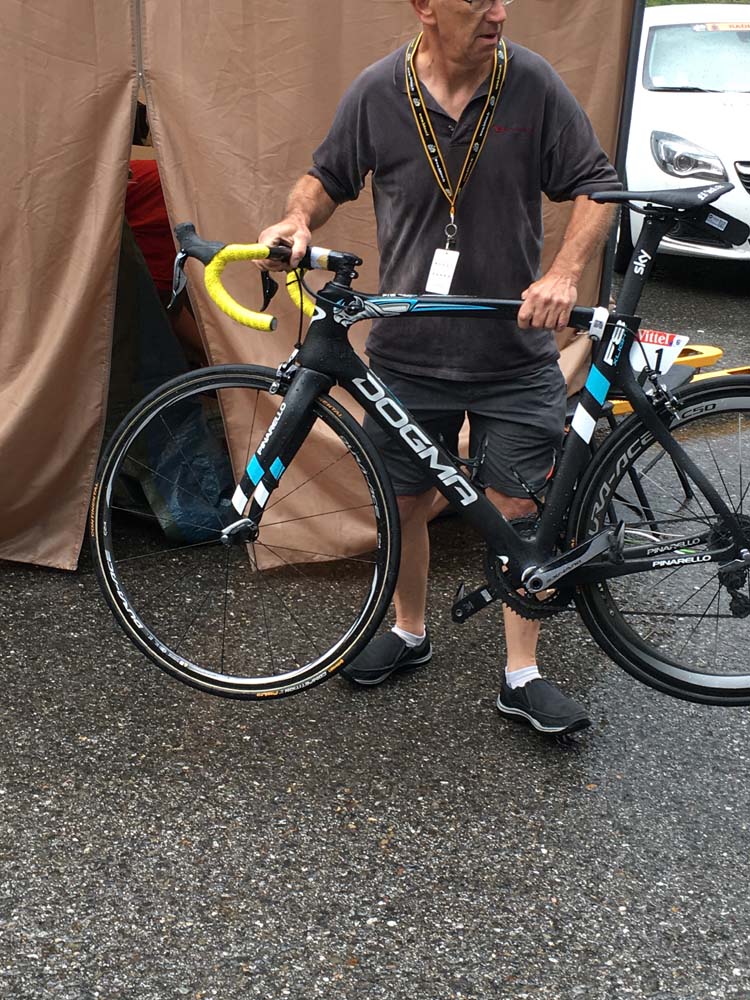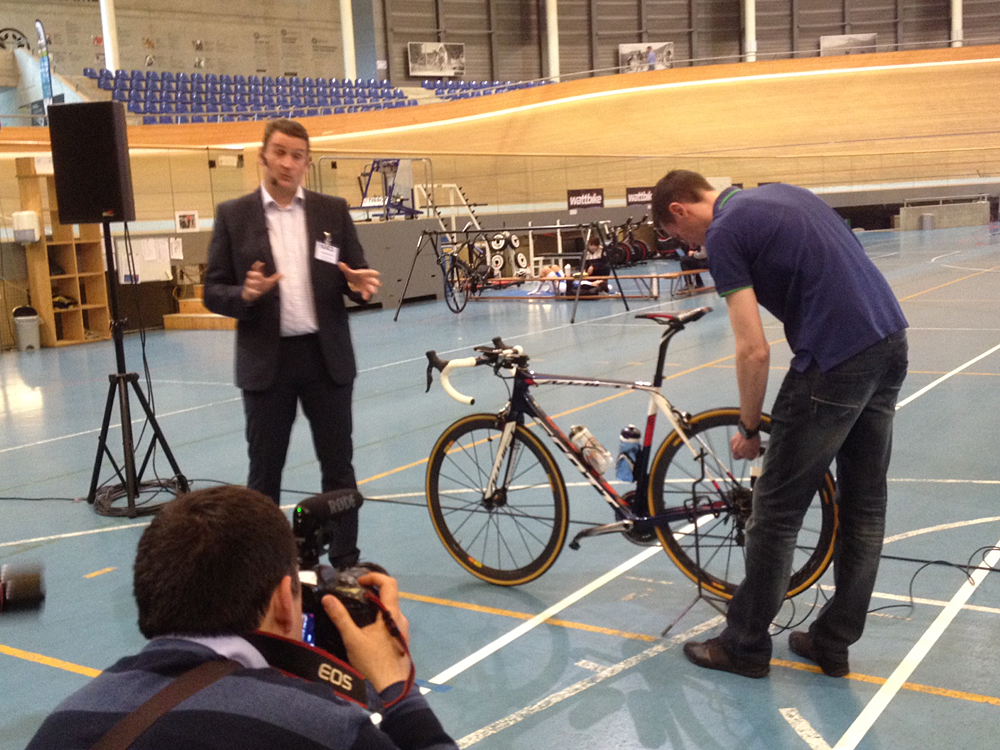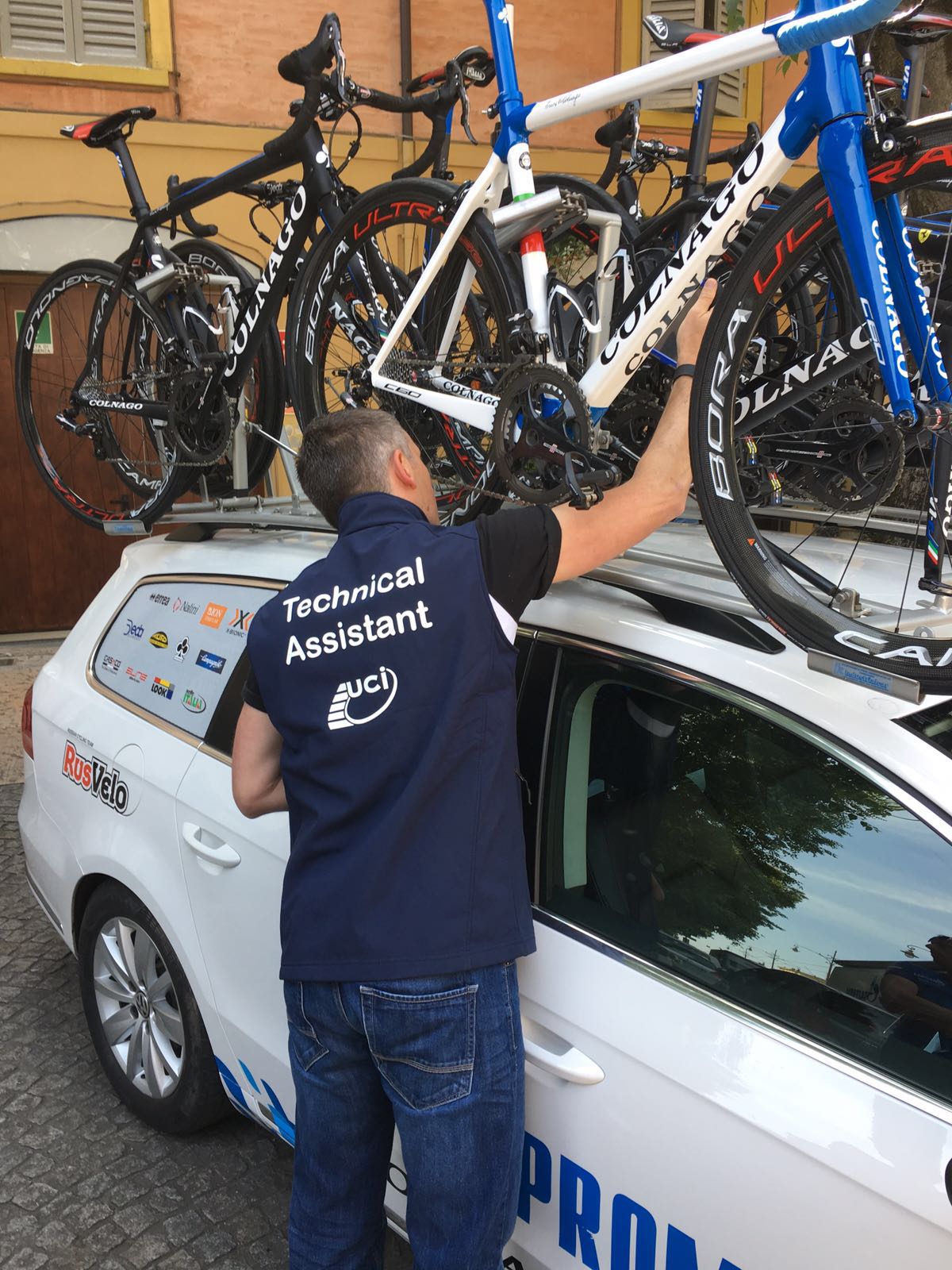Mechanical doping inventor says UCI obstructed police attempts to find cheaters at this year's Tour de France
Hungarian engineer Istvan Varjas says hidden motor technology available since 1998





Istvan Varjas, the Hungarian engineer believed to have invented the technology used for mechanical doping in cycling, has suggested that the UCI obstructed French police from carrying out checks on riders he had indicated as possible users of hidden motors during this year's Tour de France.
Wiggins sure motor doping has been going on for some time
Mechanical dopers should be heavily punished, says CPA
Mechanical doping checks carried out at Omloop Het Nieuwsblad
Mechanical doping used in Strade Bianche and Coppi e Bartali, claims investigation
Mechanical doping: UCI commissaire highlights legal grey areas
Mechanical doping: Bettini calls on UCI to use thermal cameras at Giro d'Italia
He also claimed that he sold one of the first prototypes of a motor at the end of 1998, and as part of an agreement he could not talk about the technology or continue to develop it for 10 years. He did not say who may have benefitted from using a hidden motor during that 10-year period but revealed that he has been paid for information for a television investigation made in the US that could soon reveal more.
"This summer we had a very strange experience in the Tour de France, with LeMond, Kathy and Greg," Varjas told Gilroy during the radio interview.
"They came the gendarmerie to interrogate me. I asked if they really wanted to grab who was using the motors. They said, 'Yes, we are ready to fight against it, and we want to grab the people who use it.' So I told them what they have to do, and they said, 'OK, we will do it.'”
"They went to make this kind of check, and the UCI refused to allow them to check the bikes. So after that there were no more questions. You can say everything bad about me but I had noting to do with these cheaters.”
"The police try to do this, but from the UCI persons they were not allowed to. Just ask Kathy. You can ask Kathy and she can explain this story. This is the scandal, not if they're being used or not used. If there is an organisation that is supposed to stop this problem, and they don't do it, I think they are complicit or something like this."
Kathy LeMond confirmed to Cyclingnews that Varjas spoke to French police.
Get The Leadout Newsletter
The latest race content, interviews, features, reviews and expert buying guides, direct to your inbox!
"He explained how the motor doping works and how to catch the cyclists using motors," LeMond told Cyclingnews via email.
"The gendarmes were not able to test the bikes themselves and were relying on the UCI to carry out the tests. The UCI refused to test the bikes in the manner Stefano recommended to uncover motor usage. Stefano believes the manner in which the UCI carried out the tests was insufficient to detect the motors."
In response to a request for comment from Cyclingnews, UCI spokesman Sébastien Gillot denied the accusations.
"The Union Cycliste Internationale (UCI) condemns the accusations being made in some news reports concerning the UCI's commitment to tackle technological fraud and the tests made at this year's Tour de France," Gillot wrote in his email response. "The UCI carried out extensive bike checks using various detection methods in close collaboration with race organiser, French authorities and French law enforcement."
Read more on this article:
- Lance Armstrong denies ever using mechanical doping
- Mechanical doping: A brief history
- Cookson to mechanical dopers: We will find you
- Wiggins sure motor doping has been going on for some time
- Kathy LeMond: UCI needs to do more to fight mechanical doping
An exclusive 10-year deal
Varjas told Gilroy he received a considerable sum in 1999 as part of an exclusive deal with his first client for a hidden motor. He began to sell his technology again in 2009, working with several Italian companies. He also teamed up with the Monaco-based Typhoon brand that produces high-end bikes fitted with hidden motors. Typhoon partnered with the UCI to show off its tablet device that it claims can detect hidden motors. Varjas left the company in December 2015.
"I had to stay quiet until 2009, for 10 years," Varjas explained of his ten-year deal, adding that advances in magnets made it possible to make small motors that could be placed anywhere, depending on how big the client's budget was. Varjas said he spent $80,000 making his first prototype, which was developed for recreational uses and not for pro cyclists to use in races.
"The motor was taken from a military application, they became very small but powerful and it was the idea to put it inside a bike," Varjas said. "Because if you are heavy or not of enough strong, with this motor it can add to your own power."
Asked when professional cycling became interested in the technology, Varjas said the problem was a bit more complex. He said that although he does not have proof about specific riders using his system or the other systems that have come along since but he does believe they are being used.
"With me eyes I saw something," he said. "It was not my system. Just generally, they grabbed a girl in the championship of cyclo-cross…”
He claimed it is possible to understand who is using a hidden motor.
"You just need to make a calculation," he said. "Then, when you've made a calculation in elevation of climbing, you can have by yourself the answer. Miracles do not exist in this sport. Gravity is acting on everybody, and, OK, if you go a bit faster it's OK, you can be strong, but not this 30 percent difference than other riders. It's not possible."
The Ferrari connection
Varjas also said that disgraced Italian doctor Michele Ferrari approached him about the technology after they met approximately "three years ago." Ferrari was banned for life by USADA for allegedly managing Lance Armstrong’s doping regime and that of many other riders during the last 20 years. He has always denied any wrongdoing.
"He came to me," Varjas said of Dr. Ferrari. "He approached me years ago just to understand if this technology really exists. He understands how to use it just for training. And for training he makes a blog: 53x12.com. You can read the efficacy of this and how much it helped. So if you use this it is better than using behind a scooter. You can use this bike two or three weeks before your top form. You reach your top form some weeks before. You also don't inhale the smoke of the scooter. It’s excellent.”
Pressed about whether he knew Ferrari in the early 2000s, Varjas appeared to avoid answering the question.
"He just was very curious of the bike," Varjas said.
A major investigation coming soon
Asked again if he knew of any riders using his system of mechanical doping, Varjas said he believes they have, but he couldn't offer any hard proof beyond his own speculation.
"For me, some racers have used this," he said. "Because like I said, miracles don't happen. You need to just do one thing if you are curious about who uses it. Use a heat camera or thermal gun, or you check with calculation of elevation and how fast you did it. You just take a physician expert and just take the replay of the stage, you see the elevation point and the time of each time the race passes that point, and you make a simple calculation."
Gilroy and Varjas ended the interview with a teasing question about a big story that they say will be coming out in the next "month or two."
Varjas revealed he was asked to contribute to the investigative journalism.
"Very soon you will see a big story, I think," he said. "You will see. It's a documentary; it's not a tale. They get all the evidence and witnesses under oath. They made it under oath in America with some people.”
“You will be seeing it very soon. After this comes out I can talk more, but they paid me for exclusivity for this report.”

Stephen is one of the most experienced member of the Cyclingnews team, having reported on professional cycling since 1994. He has been Head of News at Cyclingnews since 2022, before which he held the position of European editor since 2012 and previously worked for Reuters, Shift Active Media, and CyclingWeekly, among other publications.